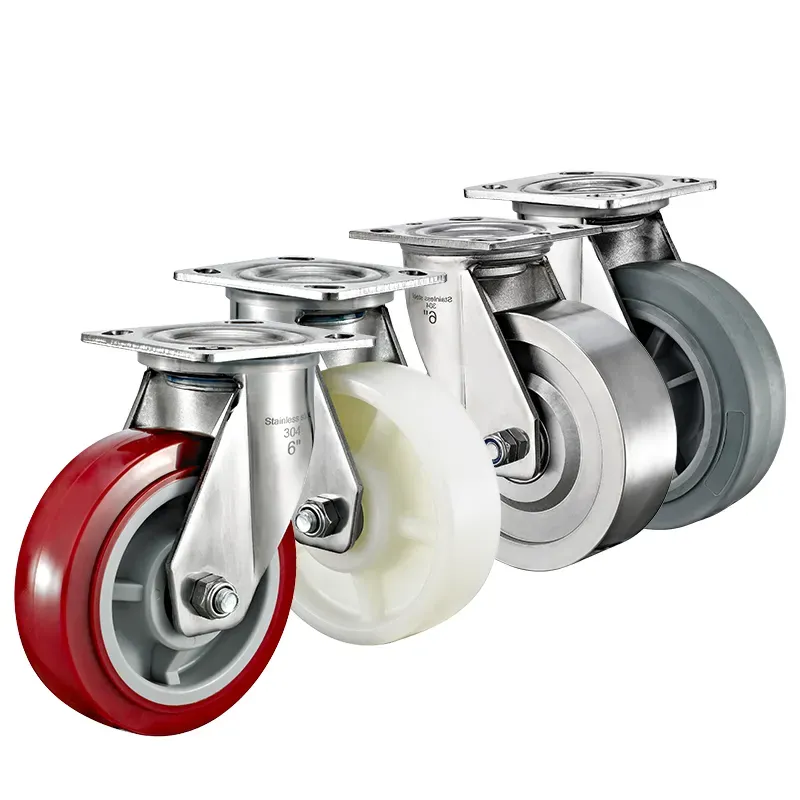1. การแนะนำลูกปืนล้อล้อ
ตลับลูกปืน มีบทบาทสำคัญในฟังก์ชั่นและประสิทธิภาพของ Casters ล้อที่หลากหลายเหล่านั้นมักจะเห็นได้ทั่วไปในอุปกรณ์มือถือที่หลากหลายจาก เก้าอี้สำนักงาน ถึง รถเข็นอุตสาหกรรม-
หัวใจของลูกล้อทุกลูกมีการทำงานอย่างเงียบ ๆ แต่มีประสิทธิภาพทำให้มั่นใจได้ว่าล้อสามารถหมุนได้ด้วยแรงเสียดทานน้อยที่สุดและง่ายดายสูงสุด
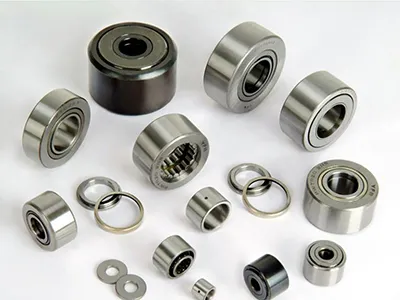
การทำความเข้าใจความแตกต่างของตลับลูกปืนลูกลอยเป็นสิ่งจำเป็นสำหรับการเลือกประเภทที่เหมาะสมสำหรับความต้องการเฉพาะของคุณ การเลือกนี้ไม่ได้เกี่ยวกับแบริ่งเท่านั้น แต่ยังเกี่ยวกับประสิทธิภาพโดยรวมความทนทานและความเหมาะสมของลูกล้อสำหรับแอปพลิเคชันที่ตั้งใจไว้
ในบทความนี้เราจะเจาะลึกลงไปในตลับลูกปืนขนาดเล็กสำรวจโครงสร้างและลักษณะของพวกเขาและหารือเกี่ยวกับวัสดุต่าง ๆ ที่ใช้ในการก่อสร้าง
2. แบริ่งล้อล้อล้อล้อ
ตลับลูกปืน มาในประเภทต่าง ๆ แต่ละประเภทมีโครงสร้างและลักษณะเฉพาะที่เหมาะสำหรับการใช้งานเฉพาะ การทำความเข้าใจความแตกต่างเหล่านี้เป็นกุญแจสำคัญในการเลือกแบริ่งที่เหมาะสมสำหรับความต้องการของคุณ มาสำรวจตลับลูกปืนขนาดเดียวที่พบบ่อยที่สุด:
แบริ่งธรรมดา
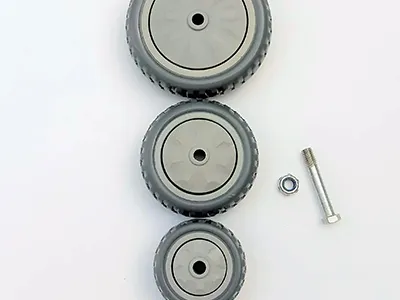
- โครงสร้าง: ตลับลูกปืนธรรมดาหรือที่รู้จักกันในชื่อแบริ่งแขนเสื้อเป็นประเภทที่ง่ายที่สุด พวกเขาประกอบด้วยแขนทรงกระบอกที่ทำจากวัสดุทนต่อการสึกหรอที่ช่วยให้ล้อล้อหมุนรอบเพลา
- ลักษณะเฉพาะ-
- ข้อดี: ตลับลูกปืนเหล่านี้ง่ายต่อการประกอบและโดยทั่วไปจะคุ้มค่ากว่าประเภทอื่น ๆ เหมาะอย่างยิ่งสำหรับการใช้งานที่ค่าใช้จ่ายเป็นปัจจัยสำคัญ
- ข้อเสีย: ตลับลูกปืนธรรมดาเหมาะสำหรับโหลดที่เบากว่าและให้ความแม่นยำน้อยลงในการหมุน พวกเขามีแนวโน้มที่จะสวมใส่มากขึ้นและอาจต้องใช้การบำรุงรักษาหรือทดแทนบ่อยขึ้น
ลูกปืน
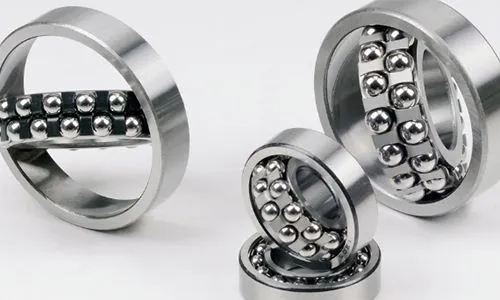
- โครงสร้าง: ตลับลูกปืนเป็นประเภทที่พบมากที่สุดในแอปพลิเคชั่นลูกล้อ พวกเขาประกอบด้วยชุดลูกเหล็กที่แข็งตัวซึ่งนั่งระหว่างสองเผ่าพันธุ์ลดแรงเสียดทานและช่วยให้การหมุนราบรื่น
- ลักษณะเฉพาะ-
- เงียบและทนทาน: ตลับลูกปืนเป็นที่รู้จักกันดีในเรื่องการทำงานที่เงียบสงบและความทนทาน พวกเขาจัดการทั้งโหลดรัศมีและแกนได้อย่างมีประสิทธิภาพ
- รูปแบบ: มีสองรูปแบบหลัก - ตลับลูกปืนคู่ซึ่งให้ความสามารถในการโหลดและเสถียรภาพที่เพิ่มขึ้นและตลับลูกปืนลูกเดี่ยวซึ่งพบได้บ่อยในแอปพลิเคชันที่เบากว่า
ตลับลูกปืน
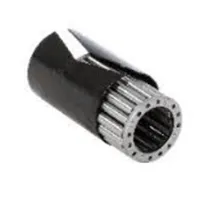
- โครงสร้าง: แบริ่งลูกกลิ้งประกอบด้วยลูกกลิ้งทรงกระบอกแทนที่จะเป็นลูกบอล ลูกกลิ้งเหล่านี้กระจายโหลดไปยังพื้นที่ขนาดใหญ่ทำให้เหมาะสำหรับการใช้งานที่หนักกว่า
- ลักษณะเฉพาะ: แบริ่งลูกกลิ้งเหมาะอย่างยิ่งสำหรับการใช้งานหนักเนื่องจากสามารถรองรับโหลดที่สูงขึ้นได้เมื่อเทียบกับตลับลูกปืนลูกบอล พวกเขามีความแข็งแกร่งและตรวจสอบให้แน่ใจว่ามีการเคลื่อนไหวที่ราบรื่นภายใต้น้ำหนักที่สำคัญ
แบริ่งลูกกลิ้งเรียว
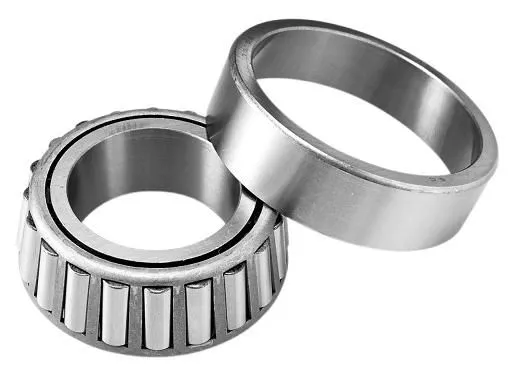
- โครงสร้าง: ตลับลูกปืนลูกกลิ้งเรียวมีลูกกลิ้งกรวยที่ชี้นำโดยซี่โครงด้านหลังบนกรวย การออกแบบนี้ช่วยให้พวกเขาสามารถจัดการโหลดรัศมีและแกนที่สำคัญในทิศทางเดียว
- ลักษณะเฉพาะ: ตลับลูกปืนเหล่านี้เหมาะสำหรับการใช้งานที่มีโหลดรัศมีขนาดใหญ่และแรงขับ พวกเขามีความทนทานสูงและมักใช้ในสภาพแวดล้อมอุตสาหกรรมที่ต้องการมากขึ้น
แบริ่งบอก
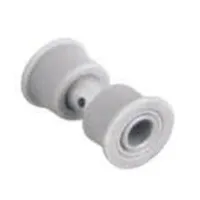
การบอกเป็นพลาสติกวิศวกรรมที่สามารถใช้เป็นเวลานานในสภาพแวดล้อมที่รุนแรงเช่นสภาพแวดล้อมที่ชื้น, กัดกร่อนและแห้ง ความยืดหยุ่นในการหมุนของมันคือค่าเฉลี่ยและความต้านทานสูง
แบริ่งลูกล้อแต่ละประเภทมีชุดของผลประโยชน์และข้อ จำกัด ของตัวเอง การเลือกสิ่งที่ถูกต้องขึ้นอยู่กับปัจจัยต่าง ๆ เช่นความสามารถในการโหลดสภาพแวดล้อมการใช้งานและความคล่องแคล่วที่จำเป็น ในส่วนต่อไปนี้เราจะหารือเพิ่มเติมเกี่ยวกับวัสดุที่ใช้ในตลับลูกปืนลูกล้อและให้ข้อมูลเชิงลึกเกี่ยวกับการเลือกประเภทที่เหมาะสมที่สุดสำหรับความต้องการของคุณ
3. วัสดุแบริ่งล้อเลื่อน
วัสดุที่ใช้ในการก่อสร้างตลับลูกปืนลูกลอยมีความสำคัญเช่นเดียวกับการออกแบบและประเภท ทางเลือกของวัสดุสามารถส่งผลกระทบต่อประสิทธิภาพความทนทานและความเหมาะสมของแบริ่งอย่างมีนัยสำคัญสำหรับสภาพแวดล้อมที่เฉพาะเจาะจง มาสำรวจวัสดุหลักสามชนิดที่ใช้ในตลับลูกปืนขนาดเดียว:
เหล็กคาร์บอน
- คำอธิบาย: เหล็กกล้าคาร์บอนเป็นวัสดุยอดนิยมในการผลิตตลับลูกปืนเนื่องจากความแข็งแรงและความคุ้มค่า เป็นโลหะผสมที่ทำจากเหล็กเป็นหลักด้วยปริมาณคาร์บอนที่เพิ่มความแข็งและความแข็งแรง
- ลักษณะเฉพาะ-
- ซื้อได้: หนึ่งในข้อดีที่สำคัญของเหล็กกล้าคาร์บอนคือความสามารถในการจ่าย มันมีโซลูชันที่คุ้มค่าสำหรับการผลิตแบริ่ง
- ทนทานน้อยลง: ในขณะที่แบริ่งเหล็กกล้าคาร์บอนมีความแข็งแรง แต่โดยทั่วไปจะมีความทนทานน้อยกว่าเมื่อเทียบกับวัสดุอื่น ๆ พวกเขามีความอ่อนไหวต่อการกัดกร่อนและอาจต้องมีการทดแทนบ่อยครั้งในสภาพแวดล้อมที่รุนแรง
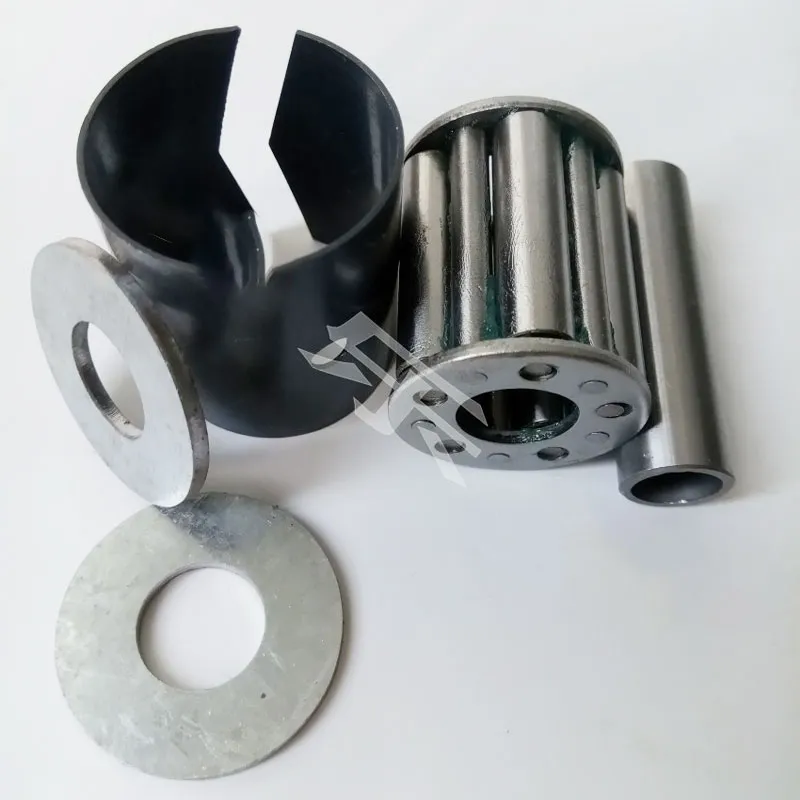
เหล็กกล้า
- คำอธิบาย: แบริ่งเหล็กที่ออกแบบมาโดยเฉพาะสำหรับการก่อสร้างแบริ่งได้รับการยอมรับในเรื่องความทนทานและความแข็งแรงที่เหนือกว่า วัสดุนี้มักจะเป็นเหล็กคาร์บอนสูงชนิดโครเมียมสูง
- ลักษณะเฉพาะ-
- แข็งแรงและทนทาน: แบริ่งเหล็กเป็นที่รู้จักกันดีในเรื่องความแข็งแรงและความทนทานที่ยอดเยี่ยม มันสามารถทนต่อโหลดที่สูงขึ้นและทนต่อการสึกหรอทำให้เป็นวัสดุที่เหมาะสำหรับการใช้งานหนัก
- ราคาแพง แต่ยั่งยืน: ในขณะที่ราคาแพงกว่าเหล็กกล้าคาร์บอนแบริ่งสตีลให้อายุการใช้งานที่ยาวนานขึ้นและประสิทธิภาพที่ดีขึ้นทำให้เป็นการลงทุนที่คุ้มค่าสำหรับการใช้งาน
สแตนเลส
- คำอธิบาย: ตลับลูกปืนสแตนเลสเป็นที่รู้จักกันดีสำหรับความต้านทานการกัดกร่อนและมักจะใช้ในสภาพแวดล้อมที่มีความชื้นสารเคมีหรือองค์ประกอบการกัดกร่อนอื่น ๆ อยู่
- ลักษณะเฉพาะ-
- ความต้านทานการกัดกร่อน: ข้อได้เปรียบที่สำคัญของสแตนเลสคือความต้านทานต่อการเกิดสนิมและการกัดกร่อนทำให้เหมาะสำหรับกลางแจ้งทะเลหรือ แอพพลิเคชั่นแปรรูปอาหาร-
- จุดราคาที่สูงขึ้น: แบริ่งสแตนเลสโดยทั่วไปมีราคาแพงกว่าประเภทอื่น ๆ แต่อายุยืนและความต้านทานต่อสภาวะที่รุนแรงมักจะแสดงให้เห็นถึงค่าใช้จ่ายที่สูงขึ้น
ทางเลือกของวัสดุสำหรับตลับลูกปืนลูกลอยควรได้รับการชี้นำโดยข้อกำหนดเฉพาะของแอปพลิเคชันรวมถึงความสามารถในการโหลดสภาพแวดล้อมและอายุการใช้งานที่คาดหวังของลูกล้อ
4. การเลือกตลับลูกปืนล้อที่ถูกต้อง
การเลือกตลับลูกปืนลูกล้อที่เหมาะสมเป็นสิ่งสำคัญสำหรับการรับรองประสิทธิภาพที่ดีที่สุดความทนทานและการทำงานของอุปกรณ์ของคุณ แบริ่งที่ถูกต้องไม่เพียง แต่รองรับภาระ แต่ยังช่วยเพิ่มความคล่องตัวและอายุยืนของลูกล้อ นี่คือข้อควรพิจารณาที่สำคัญบางประการในการแนะนำคุณในการเลือกตลับลูกปืนลูกลอยที่เหมาะสมที่สุด:
ประเมินข้อกำหนดการโหลด
- เบากับงานหนัก: พิจารณาน้ำหนักและประเภทของโหลดที่ล้อจะรองรับ แอพพลิเคชั่นที่ใช้งานง่าย เช่นเก้าอี้สำนักงานอาจทำได้ดีด้วยตลับลูกปืนธรรมดาหรือลูกปืนเดี่ยวในขณะที่ งานหนัก แอปพลิเคชั่นอุตสาหกรรมต้องการตัวเลือกที่แข็งแกร่งมากขึ้นเช่นลูกกลิ้งลูกกลิ้งหรือตลับลูกปืนแบบเรียว
พิจารณาสภาพแวดล้อมการดำเนินงาน
- ในร่มกับการใช้งานกลางแจ้ง: แบริ่งสำหรับสภาพแวดล้อมกลางแจ้งหรือสภาพแวดล้อมที่รุนแรงควรมีความต้านทานต่อองค์ประกอบเช่นความชื้นและสารเคมีมากขึ้น ตลับลูกปืนสแตนเลสเหมาะสำหรับเงื่อนไขเหล่านี้
- ข้อกำหนดด้านความสะอาดและสุขอนามัย: ในสภาพแวดล้อมเช่นการแปรรูปอาหารหรือ สิ่งอำนวยความสะดวกทางการแพทย์เลือกแบริ่งที่ทำความสะอาดและบำรุงรักษาได้ง่ายและเข้ากันได้กับน้ำมันหล่อลื่นเกรดอาหารหากจำเป็น
ประเมินความคล่องแคล่วและระดับเสียงรบกวน
- การทำงานที่ราบรื่น: สำหรับแอปพลิเคชันที่ต้องการการเคลื่อนไหวที่ราบรื่นและแม่นยำเช่นใน ขายปลีก หรือการตั้งค่าในโรงพยาบาลเลือกแบริ่งลูกลอยเช่นตลับลูกปืนลูกบอลคู่ที่ให้การหมุนที่ราบรื่นและการควบคุมที่ดีขึ้น
- การลดเสียงรบกวน: ในสภาพแวดล้อมที่เสียงรบกวนมีความกังวลแบริ่งลูกจะดีกว่าเนื่องจากการทำงานที่เงียบสงบ
ข้อกำหนดพิเศษ
- แอปพลิเคชันเกรดอาหาร: สำหรับล้อที่ใช้ในการแปรรูปอาหารให้แน่ใจว่าตลับลูกปืนเข้ากันได้กับน้ำมันหล่อลื่นเกรดอาหารและเป็นไปตามมาตรฐานสุขอนามัย
5. การเปลี่ยนตลับลูกปืนล้อล้อล้อ
การเปลี่ยนตลับลูกปืนล้อล้อเป็นงานที่ตรงไปตรงมาซึ่งสามารถทำได้ด้วยเครื่องมือพื้นฐานบางอย่าง นี่คือคำแนะนำทีละขั้นตอน:
เครื่องมือและวัสดุที่จำเป็น
- ตลับลูกปืนใหม่: ตรวจสอบให้แน่ใจว่ามีขนาดที่ถูกต้องสำหรับล้อล้อของคุณ
- ไขควงหรือคีย์อัลเลน: ขึ้นอยู่กับประเภทของสกรูบนลูกล้อของคุณ
- ประแจหรือคีม: เพื่อถอดน็อตถือล้อเข้าที่
- ค้อนและหมัด: สำหรับการแตะตลับลูกปืนเก่า
- จาระบี: สำหรับการหล่อลื่นตลับลูกปืนใหม่
- ผ้าขี้ริ้วหรือกระดาษเช็ดมือ: สำหรับการทำความสะอาด ขั้นตอนสำหรับการเปลี่ยน
- เตรียมลูกล้อสำหรับการซ่อมแซม:
- นำลูกล้อออกจากเมาท์โดยปกติแล้วจะคลายเกลียว
- วางไว้บนพื้นผิวที่แข็งแรงและเรียบ
①ถอดล้อ:
- ใช้ประแจหรือคีมเพื่อถอดน็อตออกจากวงล้อ
- เลื่อนล้อออกจากเพลา
②เอาแบริ่งเก่า:
- ค้นหาตลับลูกปืนทั้งสองข้างของล้อ
- ใช้ไขควงหรือหมัดและค้อนเพื่อเบา ๆ แตะแบริ่งเก่าออก ระวังอย่าทำลายล้อ
③ทำความสะอาดและตรวจสอบ:
- ทำความสะอาดสิ่งสกปรกหรือเศษซากจากล้อและพื้นที่เพลา
- ตรวจสอบความเสียหายใด ๆ ที่อาจต้องซ่อมเพิ่มเติม
④ติดตั้งตลับลูกปืนใหม่:
- ใช้จาระบีบาง ๆ กับตลับลูกปืนใหม่
- จัดแนวพวกเขาด้วยที่นั่งแบริ่งบนพวงมาลัยแล้วกดพวกเขาคุณอาจต้องแตะเบา ๆ เข้าที่ด้วยค้อน
⑤ประกอบวงล้ออีกครั้ง:
- เมื่อมีแบริ่งใหม่เข้ามาแล้วให้เลื่อนล้อกลับเข้าสู่เพลา
- ยึดน็อตให้แน่นแน่น แต่ไม่แน่นเกินไป
⑥ reattach The Caster:
- วางลูกล้อกลับเข้าไปในเมาท์แล้วยึดด้วยสกรู
⑦ทดสอบลูกล้อ:
- ตรวจสอบให้แน่ใจว่าล้อเคลื่อนที่ได้อย่างราบรื่นและลูกล้อหมุนได้อย่างอิสระ
เคล็ดลับ
- สวมใส่อุปกรณ์ความปลอดภัย: แนะนำให้ใช้ถุงมือและแว่นตานิรภัย
- ตรวจสอบการจัดตำแหน่งล้อ: ตรวจสอบให้แน่ใจว่าล้อได้รับการจัดตำแหน่งอย่างถูกต้องเพื่อให้แน่ใจว่ามีการเคลื่อนไหวที่ราบรื่น
- กำจัดแบริ่งเก่าอย่างถูกต้อง: อย่าเพิ่งโยนพวกเขาลงในถังขยะ พิจารณาการรีไซเคิล
สิ่งนี้จะช่วยให้คุณเปลี่ยนตลับลูกปืนในล้อล้อของคุณได้อย่างมีประสิทธิภาพ โปรดจำไว้ว่าหาก ณ จุดใดที่คุณรู้สึกไม่แน่ใจขอแนะนำให้ปรึกษามืออาชีพ
6. สรุปและเรียกร้องให้ดำเนินการ
ในคู่มือที่ครอบคลุมนี้เราได้สำรวจความซับซ้อนของตลับลูกปืนลูกล้อซึ่งเป็นองค์ประกอบสำคัญในการทำงานและประสิทธิภาพของล้อ จากการทำความเข้าใจกับแบริ่งประเภทต่าง ๆ - ธรรมดาลูกบอลลูกกลิ้งลูกกลิ้งเรียวและแบริ่งบอก - เพื่อเจาะลึกลงไปในวัสดุที่พวกเขาทำจากรวมถึงเหล็กกล้าคาร์บอนเหล็กแบริ่งและสแตนเลส
ตอนนี้ตัวเลือกอยู่ในมือของคุณ
คุณกำลังมองหาล้อที่มีคุณภาพสูงและทนทานที่สามารถทนต่อความต้องการของแอปพลิเคชันเฉพาะของคุณได้หรือไม่? คุณต้องการพันธมิตรที่เชื่อถือได้เพื่อให้คำแนะนำจากผู้เชี่ยวชาญและโซลูชั่น Caster ระดับสูงหรือไม่?
ติดต่อเรา- Reach out to our team of experts for personalized advice and solutions tailored to your unique requirements.


